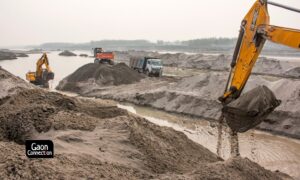A new study has found that areas with higher levels of air pollution due to the burning of fossil fuels like petrol and diesel are more likely to be the sites with higher number of COVID19 infections.
The study titled – ‘Establishing a link between fine particulate matter (PM2.5) zones and COVID -19 over India based on anthropogenic emission sources and air quality data’ – provided evidence about how people living in highly polluted areas of the country are vulnerable to COVID19 infection.
“We found that regions with huge amounts of fossil fuel such as petrol, diesel, and coal etc. combustion in transport and industrial activities, also experiences a lot more Covid-19 cases,” Saroj Kumar Sahu, Lead Author of the study, stated adding that the health impacts of air pollution and COVID19 also had similar linkages. The study has been published in the Netherlands-based Elsevier publication.
In the study, COVID19 cases were observed between March 2020 to November 2020, while national PM 2.5 emissions load were estimated from base year 2019.
As per the air quality data collected and analysed by the researchers of the study, Uttar Pradesh recorded the highest emission load of 1138.08 Gigagram per year (Gg/Yr) of PM2.5 followed by Maharashtra at 828.3 Gg/Yr.
Also Read: Despite COVID19 restrictions and lockdowns, several Indian cities register high air pollution
PM 2.5 penetrates deeper into the lungs
The study explained that the air has suspended particulate matter (PM) of different sizes and many of these are a complex mixture of dust, pollen, soot and smoke and they are hazardous. “Of this, PM 2.5 is the smaller kind, with a diameter not more than 2.5 micrometers (fine particles). PM2.5 is considered to have a very significant health impact as it can stay in the air for days or weeks, and is small enough to invade the lung airways,” it stated.
“These fine particles penetrate deep into the body and fuel inflammation in the lungs and respiratory tract, leading to the risk of having cardiovascular and respiratory problems, including a weak immune system,” the study mentioned.
Also Read: Artificial lungs turn black in Kharghar, Navi Mumbai, indicating high air pollution
Pollution hotspots
For the study, authors divided specific areas into different hotspot zones across India. From 16 cities across 36 states, Mumbai and Pune were the two cities picked from Maharashtra (falling under zone 6) for the study.
“During the same period-till November 5, 2020- Maharashtra recorded 17.19 lakh Covid-19 cases, which was highest in the country. However it is important to note that in terms of PM2.5 emission per person, Maharashtra is ahead of Uttar Pradesh,” the lead author of the study was quoted.
Also Read: Maharashtra can save Rs 750 billion in next 10 years. Here’s how
Among the 16 cities covered in the study, Mumbai and Pune recorded the third and fourth highest ‘bad air quality days’.
Mumbai, witnessed a total of 165 bad air quality days. Similarly, Pune saw a total of 117 bad air quality days. In comparison, Mumbai recorded 264,000 COVID19 cases and 10,445 deaths during this period, which was the highest in the country while Pune recorded 338,00 COVID19 cases and 7,060 deaths.
Also Read: Air quality in Mumbai is deteriorating. Coal use in Mumbai Metropolitan Region to be blamed: CSE


















